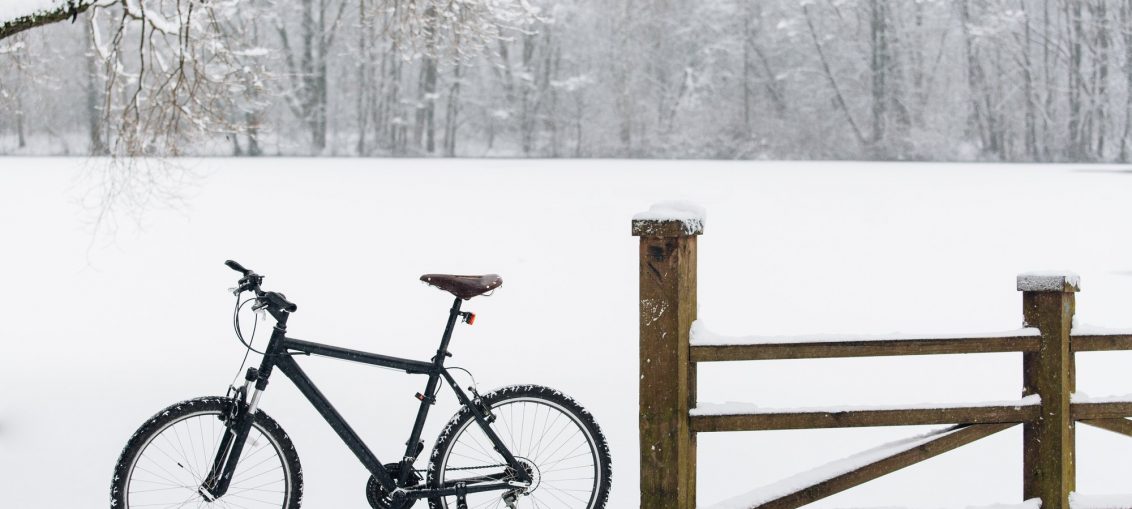
Many athletes train only when it’s convenient, but true winners train when they should. Training through the winter can be hard, but that’s no excuse for you to cut corners.
Sure, trainers can get the job done, but what about motivation? There are people out there who ride in winter just fine, and so can you.
If you want to improve, you have to do what it takes. It may be cold and inconvenient, but if your competitors go out there and cycle, you should too!
Today, we take a look at how to survive cold weather cycling with practical tips and tried methods.
Warming Up
First things first. You can’t start your winter rides without a proper warm up. Your arms will get cold quickly and you won’t be able to keep up form.
It is important to start your ride with warmed up muscles. You can start with a ten-minute session on your trainer before going out, or just cycle easy until you are all warmed up before starting properly.
A hot drink before your ride may also help, but be careful not to weigh yourself down by overdoing it.
Keeping Warm
Now that you have warmed up, it’s important to keep warm while you ride. You will need the staples. These are your helmet, your chamois shorts, and your shoes.
But these alone won’t be enough. To stay warm during your winter training, you need to keep your body protected from the wind. You will also need to make sure you have enough insulation to capture the heat inside
Almost a tenth of our body heat is lost through our heads. Ear warmers, a scarf, a skull cap, or a balaclava are all good choices to keep your head warm.
Wear mittens to keep your fingers from freezing over. This is important because cold fingers mean a loose grip, which can spell disaster.
To keep your chest warm, wear an isothermal shirt next to your skin. There are many different options here, including polyester-based wick fabrics. Over your wicking shirt that, wear a breathable jacket. This should ideally be both water and wind resistant.
Use leg warmers if you cycle in temperatures that go below 60 degrees. For your feet, wear a pair of isothermal socks, or double that if the weather is too cold. You may also opt for isothermal shoe covers for an extra layer of protection.
Now you are properly dressed up for winter training, but that’s just the beginning of your preparations!
See and Be Seen
Before hitting the road in winter, you have to make sure you will be visible to drivers. Your average driver isn’t accustomed to cyclists during the colder months. That is why you should wear bright clothes with reflectors, even if you ride during the day.
You should also equip your bike with reflectors and a dependable light because days are shorter during winter. Low light can spell danger, and in winter this can come about not only at night. Many weather conditions directly affect your visibility, so come prepared.
Winterize Your Bike
If you are serious about outdoor winter training, you need to winterize your ride. First, consider your drive train. A lot of water and mud mean you will need to maintain your drive train more often. You may replace your regular chain with a stronger alternative for the winter. This will weigh down your bike, but it will save you time and effort from replacing the chain so often.
You might also need to upgrade to larger tires, preferably 25mm. If you cycle on wet roads you will need more traction, even if it means a bulkier bike. You will also need fenders to avoid splashing cold water on your legs.
As usual, you will need a trusty flat tire kit with a pump, or a CO2 canister if you can afford it.
Taking it Indoor
Sometimes it’s just too cold and wet to cycle outdoors. If it’s raining or snowing, you will have to stay inside. You can’t risk catching a cold and losing time from your training.
But even if you can’t go outside, you can continue your winter training indoors. Sure, trainers can be boring, but they provide a safe alternative until the rain stops and you can go outside again. Trainers can also give you a much-needed change of pace and help you avoid workout burnout.
You Are Not Alone
Winter training is better with company. Riding with a group of friends can turn challenges into fun, and give you an extra bit of protection during a tough ride. You can shield each other from cutting winds, and chat about the snowy weather to keep your spirits up.
Finally, if you are thinking about slacking off during winter, think of your competitors. What tells true champions apart from regular athletes is the will to push through. Winter is the same for everyone, so if your competitors can go out there, so can you!
Master Cold Weather Cycling and Up Your Triathlon Performance
Now that you know how to survive the winter with cold weather cycling, it is time to up your triathlon performance. Here at Triathlon.net, we offer professionals and beginners the resources they need to succeed.
In our website, you will find training tips, health and fitness guides, and the inspiration you need to succeed. So come on in and get ready to get fit and life a healthy lifestyle.
